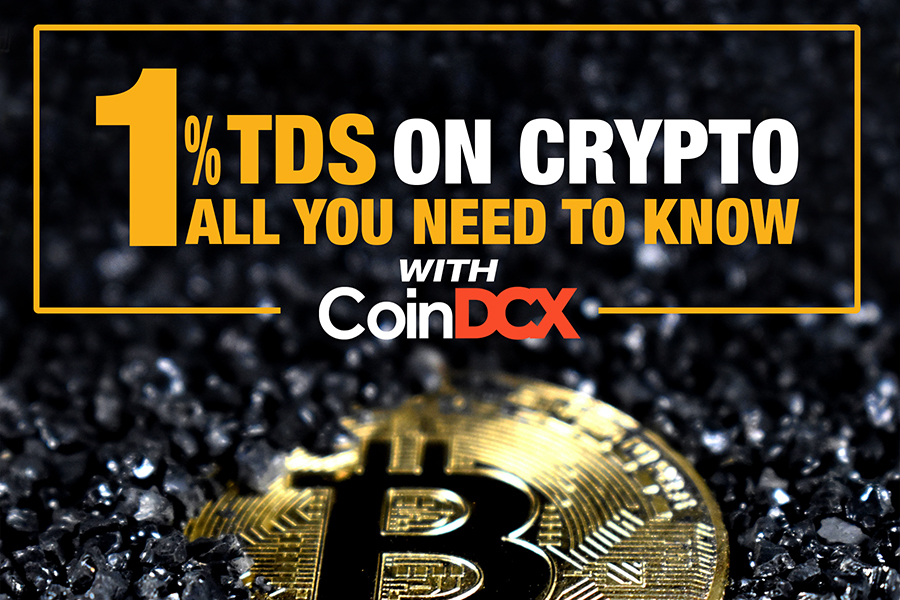1% TDS on crypto in India
Following the implementation of a 30% tax rate on cryptocurrency gains earlier this year, Indian investors are now faced with a further 1% TDS on transfers of virtual assets
By Brand Connect
 Learn all about what TDS is and how it will apply to crypto assets.
Learn all about what TDS is and how it will apply to crypto assets.
What is TDS?
TDS or Tax Deducted at Source is income tax reduced from the money paid at the time of making certain payments. According to this concept, a person (deductor) who owes a specific amount to another person (deductee) is required to deduct tax at the source and remit it to the Central Government. Based on Form 26AS or a TDS certificate provided by the deductor, the deductee from whose income tax source deductions have been made is entitled to get a credit for the amount deducted.
What is TDS on crypto?
On June 22, 2022, the Central Board of Direct Taxes (CBDT) published a circular outlining the tax deduction process for virtual digital assets (VDA) transfers and cryptocurrencies. On July 1, 2022, the new TDS regulations on VDA and crypto went into effect.
According to CBDT, the TDS on the transfer of VDA will apply if:
a) The "specified person's" (buyer's) total payment during the financial year exceeds Rs 50,000; or
b) The total payment made by any other buyer (other than the "specified person") during the financial year exceeds Rs 10,000.
Under the new rules, a virtual digital asset buyer must deduct 1% of the amount paid to the seller (a resident Indian) as income tax deducted at source. Taxes must be subtracted depending on which occurs first - either when funds are credited to the account or when they are paid to the resident individual. According to CBDT, the tax will only be subtracted if the amount paid exceeds the permitted limit.
The tax at the time of the transfer of VDA will be deducted at the rate of 20% if the deductee's (seller's) PAN is not available. Additionally, if the person hasn't filed their income tax return, TDS will be imposed at a higher rate of 5% (as opposed to the standard rate of 1%).
How will TDS work?
Let's look at an example to better understand how TDS is applicable. Let's say you sold Rs.2500 worth of bitcoin today. Then, the sale amount of Rs. 2500 will be reduced by the 1% TDS, which equals about Rs. 25.
Here’s a detailed overview of how TDS will impact transactions.
Scenario 1: Buying and selling crypto with INR
- There is no TDS if the customer uses INR to buy a Virtual Digital Asset (VDA).
- However, the TDS of 1% would apply if the same buyer sold the VDA back for INR.
Scenario 2: Buying and selling crypto with crypto
- A 1% TDS on the sales transaction will be applicable if a customer exchanges a cryptocurrency to purchase another cryptocurrency. For instance, if you used 1000 USDT to purchase Bitcoin worth $1000, you would be obliged to pay the TDS of 1% of 1000 USDT, or roughly 10 USDT.
- If you are selling your Bitcoin for USDT, you would be required to pay 1% of the Bitcoin's INR value as Tax Deducted at Source.
The bottom line
According to the new rules, TDS payments on the transfer of virtual digital assets are mandatory. Indian investors should also note that TDS would be charged even if they have already paid a 30% income tax on their profits or gains. Both are separate tax liabilities that must be settled on their own. However, investors can claim the difference as a refund when filing an ITR if the amount of income tax owing is less than the amount of TDS deducted.
The pages slugged ‘Brand Connect’ are equivalent to advertisements and are not written and produced by Forbes India journalists.



